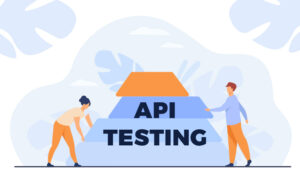Ace Your QA Lead Interview: Top 20 Questions and Sample Answers
QA Leads play an essential role in ensuring the quality of software products. They lead the QA team in planning and executing quality assurance activities to ensure that software products meet the desired quality standards. To become a successful QA Lead, one must possess the necessary skills and expertise in software testing, as well as management and leadership skills.

If you are looking to hire a QA Lead, here are the top 20 interview questions you can ask to assess their skills, experience, and suitability for the role.
1. What is your experience in software testing, and how did you develop your expertise?
Answer: “I have been working in software testing for over 10 years. My experience includes manual and automated testing, functional and non-functional testing, and testing for different industries such as healthcare and finance. I developed my expertise by taking relevant courses, attending conferences, and continuous learning on the job.”
2. What are the common testing methodologies you have worked with, and which one do you prefer the most?
Answer: “I have worked with different testing methodologies such as Waterfall, Agile, and DevOps. I prefer the Agile methodology the most as it allows for more flexibility, collaboration, and continuous feedback.”
3. What is your experience with test planning and test strategy development, and how do you approach these tasks?
Answer: “I have extensive experience in test planning and strategy development. My approach includes understanding the business requirements, identifying the testing objectives and scope, defining the test environment and tools, and establishing the test timelines and milestones. I ensure that the test plan aligns with the project goals and objectives and is regularly reviewed and updated.”
4. How do you prioritize testing activities, and how do you ensure that all essential testing is covered in a given timeline?
Answer: “I prioritize testing activities based on the criticality and complexity of the features or functionalities. I work closely with the development team and product owners to identify the essential testing areas and ensure that they are covered within the given timeline. I also regularly review and update the testing priorities based on any changes in the project scope or requirements.”
5. Can you explain the role of a QA Lead in an agile development environment, and how do you ensure the QA team’s alignment with agile principles?
Answer: “The role of a QA Lead in an agile development environment is to ensure that the testing activities align with the agile principles of collaboration, feedback, and continuous improvement.
I work closely with the development team and product owners to ensure that the QA team is involved in all the relevant agile ceremonies such as sprint planning, daily stand-ups, and sprint retrospectives. I also ensure that the QA team is continuously improving their testing practices and is adapting to any changes in the project requirements or scope.”
6. What are your approaches to risk analysis and management in software testing?
Answer: “My approaches to risk analysis and management include identifying the potential risks and their impact on the project, prioritizing them based on their severity, and developing mitigation strategies. I involve the relevant stakeholders in the risk analysis process and ensure that the risks are regularly reviewed and updated.”
7. How do you collaborate with cross-functional teams such as developers, product managers, and business analysts to ensure high-quality software products?
Answer: “I collaborate with cross-functional teams by establishing regular communication channels, ensuring that the testing objectives align with the project goals, and involving the relevant stakeholders in the testing process. I also ensure that the QA team is continuously providing feedback to the development team, product owners, and business analysts.”
8. Can you explain your experience with automation testing, including tools and frameworks used, and how it is integrated into the testing process?
Answer: “I have 3 years of experience in automation testing using Selenium and Appium frameworks. I have developed and executed test scripts, created automation frameworks, and integrated automation testing into the overall testing process.
In my previous role, we used Jenkins to schedule and execute our automated tests, and JIRA to track the results and generate reports. We identified the test cases suitable for automation, developed test scripts, and integrated them into our continuous integration and delivery pipeline. This allowed us to run automated tests continuously and detect defects early in the development cycle.”
9. How do you manage test data, and what strategies do you use to ensure the accuracy and reliability of test data?
Answer: I manage test data by creating test data sets for each scenario that includes both valid and invalid inputs. I ensure the accuracy and reliability of test data by using test data generators, extracting data from production environments, and using mock data for third-party integrations.
To validate the data’s accuracy, I follow a validation process, including data integrity, consistency, boundary, negative, and error testing. I also store test data in a separate repository and document its source, format, and validation criteria for future reference.
10. Can you share your experience with manual and exploratory testing, and how do you decide which approach to use?
Answer: “I have extensive experience with manual and exploratory testing. I usually decide which approach to use based on the test requirements, complexity, and risk involved. For simple test cases, I opt for manual testing. For more complex test cases, I use exploratory testing, where I explore the system’s behavior to find potential defects. I also combine both approaches to achieve optimal results.”
11. What is your experience in functional and non-functional testing, and how do you approach testing for these types of requirements?
Answer: “I have extensive experience in functional and non-functional testing. For functional testing, I typically follow a structured testing approach that involves designing and executing test cases based on the requirements and specifications. For non-functional testing, I use a combination of performance, security, and usability testing techniques.
I also analyze the system’s behavior under various conditions and use load-testing tools to determine its scalability and responsiveness. To ensure comprehensive testing, I develop test plans that cover both functional and non-functional requirements.”
12. How do you track and report testing progress and results to stakeholders, and what are the essential metrics you use?
Answer: “To track and report testing progress and results to stakeholders, I use a combination of manual and automated reporting methods. I use testing management tools like JIRA or HP ALM to track test cases and report testing progress. I also generate daily, weekly, and monthly reports that highlight the testing status, defects found, and resolved issues. I ensure that the reports are easily understandable by all stakeholders.
In terms of essential metrics, I typically use metrics like defect density, test coverage, and test execution progress to track testing progress and identify areas for improvement. I also track metrics like defect severity, priority, and cycle time to identify the most critical defects and prioritize their resolution.”
13. What are your approaches to defect tracking and management, and how do you ensure timely resolution?
Answer: “To track and manage defects, I use a defect tracking tool such as JIRA or Bugzilla. I ensure that all defects are well documented with clear steps to reproduce, severity, priority, and other relevant details. I also ensure that defects are assigned to the relevant team members and escalate any critical defects to management.
To ensure timely resolution, I prioritize defects based on their severity and impact on the system’s functionality. I work closely with the development team to ensure that defects are fixed within the agreed-upon timelines. I also conduct regular defect triage meetings to prioritize defects and ensure that they are resolved on time.”
14. How do you ensure that testing complies with industry standards and regulations such as ISO, GDPR, or HIPAA?
Answer: “To ensure that testing complies with industry standards and regulations, I conduct thorough research on the relevant standards and regulations such as ISO, GDPR, or HIPAA. I ensure that my testing approach and test cases adhere to these standards and regulations.
I also work closely with the compliance team to understand any specific requirements and incorporate them into my testing approach. I document my testing process, results, and any deviations from the standards and regulations for audit purposes. Finally, I also ensure that all test data is handled securely, and access to sensitive data is restricted to authorized personnel only.”
15. How do you ensure that testing aligns with user requirements and that the user experience is excellent?
Answer: “To ensure that testing aligns with user requirements and that the user experience is excellent, I work closely with the product team to understand user needs and preferences. I ensure that the test cases cover all the requirements specified in the user stories and that the system behavior aligns with the user’s expectations.
I also conduct user acceptance testing to validate that the system meets the user’s needs and is easy to use. I document any issues or feedback from users and work with the development team to address them. Finally, I also ensure that the system performance and usability are tested, and any issues impacting the user experience are prioritized for resolution.”
16. Can you share your experience with testing tools and technologies such as JIRA, Selenium, or LoadRunner?
Answer: “I have extensive experience using testing tools and technologies such as JIRA, Selenium, and LoadRunner. JIRA is a widely used issue tracking tool that I have used for managing test cases, documenting defects, and tracking testing progress.
Selenium is a powerful automation testing tool that I have used for automating functional testing for web applications. I have written Selenium scripts in various programming languages such as Java and Python to automate test cases and improve testing efficiency.
LoadRunner is a performance testing tool that I have used to simulate high traffic and stress test web applications. I have used LoadRunner to identify performance bottlenecks, optimize system performance, and ensure system scalability.
I also have experience with other testing tools such as Appium for mobile testing and JMeter for load testing. I stay updated with the latest testing tools and technologies to ensure that my testing approach is efficient and effective.”
17. How do you identify and address testing challenges and bottlenecks in the QA process, and what strategies do you use to overcome them?
Answer: “To identify and address testing challenges and bottlenecks, I conduct regular reviews of the testing process to identify areas that require improvement. I prioritize challenges based on their impact on testing efficiency and the quality of the end product.
To overcome challenges, I collaborate with the development team and other stakeholders to address any technical or process-related issues that are impacting testing. I also leverage automation testing and test management tools to optimize the testing process and increase testing efficiency.
I also believe in continuous learning and improvement, and regularly attend industry conferences, webinars, and training programs to stay updated with the latest testing methodologies and tools. This helps me to proactively address potential bottlenecks and improve the overall QA process.”
18. Can you share an example of how you have resolved a significant defect or testing issue in your previous role?
Answer: “In my previous role, we encountered a significant defect in a web application that was causing a high number of user complaints. After analyzing the issue, we discovered that the defect was caused by a third-party library that was not compatible with the latest version of the web application.
To resolve the issue, I collaborated with the development team to roll back the third-party library to a compatible version. We also conducted extensive testing to ensure that the issue was fully resolved before releasing the updated version of the application.
This experience taught me the importance of thorough analysis and collaboration with the development team to resolve defects and ensure the quality of the end product.”
19. How do you ensure the development of a highly skilled and motivated QA team, and what are your approaches to team management and leadership?
Answer: “To develop a highly skilled and motivated QA team, I prioritize regular training and mentoring sessions to help team members develop new skills and advance their careers.
I also encourage open communication and collaboration within the team to foster a positive work environment that promotes creativity and innovation. Additionally, I set clear expectations for team members and provide regular feedback on their performance to help them improve and grow.
As a leader, I lead by example, demonstrating a strong work ethic, dedication, and a commitment to excellence. I also prioritize the development of a culture of accountability, where team members take ownership of their work and hold themselves and their colleagues accountable for the quality of their work.”
20. What are your career goals as a QA Lead, and how do you plan to achieve them?
Answer: “As a QA Lead, my primary career goal is to continuously improve my skills and knowledge to stay abreast of emerging trends and technologies in the industry.
To achieve this, I plan to attend relevant training programs, conferences, and seminars to keep myself updated with the latest industry practices. Additionally, I aim to take on more challenging projects that will enable me to enhance my leadership and technical skills.
In the long term, I aspire to take on more senior roles in QA management and contribute to the development of innovative testing strategies that will enhance the quality and efficiency of software development processes.”
Conclusion
Hiring a QA Lead is an essential task for any organization that values the quality of their software products. Asking the right questions during the interview process can help you assess the candidate’s skills, experience, and suitability for the role.
The above-listed questions cover a wide range of topics that can help you evaluate the candidate’s expertise in software testing, management, leadership, and teamwork. By asking these questions, you can ensure that you hire the best candidate for the role of QA Lead in your organization.






